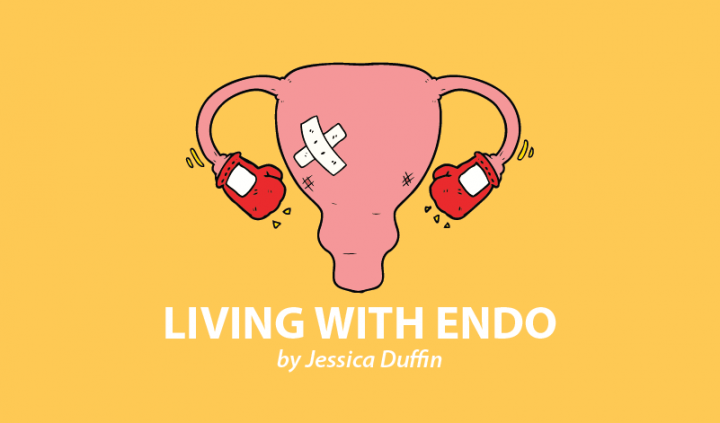Second in a series. Read part one.
In this final installment about learning how to eat for endo, I’ll tell you some ways to get started: with books, courses, or even working with a nutritionist.
1. Buying books
If you have a bit more of a budget to play with, books are a great way to go and can help you feel assured that you’re gathering solidly researched information. Without the help of my first book investment, “Take Control of Your Endometriosis,” I wouldn’t be where I am now, and I’m not even sure This EndoLife would exist!
Books are helpful because they usually take you through the science, the evidence, and the steps to take action. My personal suggestion is to buy books written by qualified nutritionists/hormone specialists for these reasons. (Of course, there are other books on endo out there and they’re great, too, but I’m focusing on nutrition in this instance.) I also recommend not buying too many at once, as it can be overwhelming. It is for me, anyway.
You probably know this by now, but my favorites are “Take Control of Your Endometriosis” and “WomanCode,” though I suggest reading “WomanCode” a bit later on in your journey, as it can be a little scary in terms of the dietary changes. Other books I’ve recently come to love are “The Period Repair Manual,” “Period Power,” and “The Happy Balance” (which is actually a cookbook). I think a nice coupling to get started would be “Take Control of Your Endometriosis” and “The Happy Balance,” but go with what you feel drawn to!
2. Buying a course
Next up, courses. I have to say, I love a good course. A book may be super helpful, but I’m left with a ton of questions. Doing a course often means that you get access to the course leader, so you can ask your questions. At the least, you have access to a community, so you can ask questions there and get answers from others who have gone through similar experiences.
Courses are a lot more digestible, too. To me, they feel lighter to work through than a book, and they often contain step-by-step instructions, so you can put what you learn into action immediately. Doing a course is a bit like having an expert virtually holding your hand through the process — it’s the next best thing to actually working one-on-one with someone.
The downside is, of course, the cost. Most of the endometriosis or period health courses I know of range from $99 to up to $400. I actually think they’re all great value for the money, but it can be a bit trickier for some of us to afford those numbers.
I recommend checking out courses by Alisa Vitti, Nicole Jardim, and Jessica Murnane.
3. Going to a nutritionist
Finally, you could see a nutritionist or women’s health expert. I couldn’t afford this when I started eating for endometriosis, and to be honest, I still can’t. But for the amount of money I’ve spent on different books, courses, workshops, and supplements and foods — well, I might as well have gone to a nutritionist in the first place. Not only would I have potentially saved money, I sure would have saved time.
What I am learning now is what I am certain a nutritionist would have taken me through in the first place. In fact, I had a nutritionist friend who gave me a free session quite early on and told me I needed to take care of my blood sugar. Because I didn’t understand why I needed to, however, I totally dismissed it. Four years later, I’m finally implementing that change and learning why it’s important.
A nutritionist allows you to take a personalized approach to your healing. You won’t be trying to apply the teachings from a book or course to your own life and working out what fits — it’ll be the other way around. The nutritionist begins with you, and then tailors the protocol around your own specific needs, goals, and values. And the bonus is that you get to ask questions!
Of course, the challenge with nutritionists is the cost, but if you can afford it, I personally think it could be a very useful investment. Perhaps it would be worth adding up what you anticipate spending on books and a course, and seeing whether a nutritionist would actually be more cost-effective.
If a nutritionist isn’t quite in your budget, then by all means, start online. There’s so much information out there to learn; it just might require a bit more legwork.
My personal preference would be to read books alongside working with a nutritionist. Of course, always do what feels right for you.
***
Note: Endometriosis News is strictly a news and information website about the disease. It does not provide medical advice, diagnosis, or treatment. This content is not intended to be a substitute for professional medical advice, diagnosis, or treatment. Always seek the advice of your physician or other qualified health provider with any questions you may have regarding a medical condition. Never disregard professional medical advice or delay in seeking it because of something you have read on this website. The opinions expressed in this column are not those of Endometriosis News or its parent company, BioNews Services, and are intended to spark discussion about issues pertaining to endometriosis.

